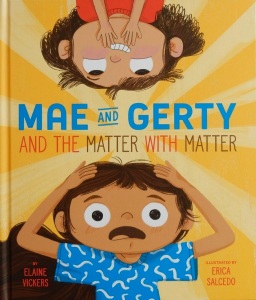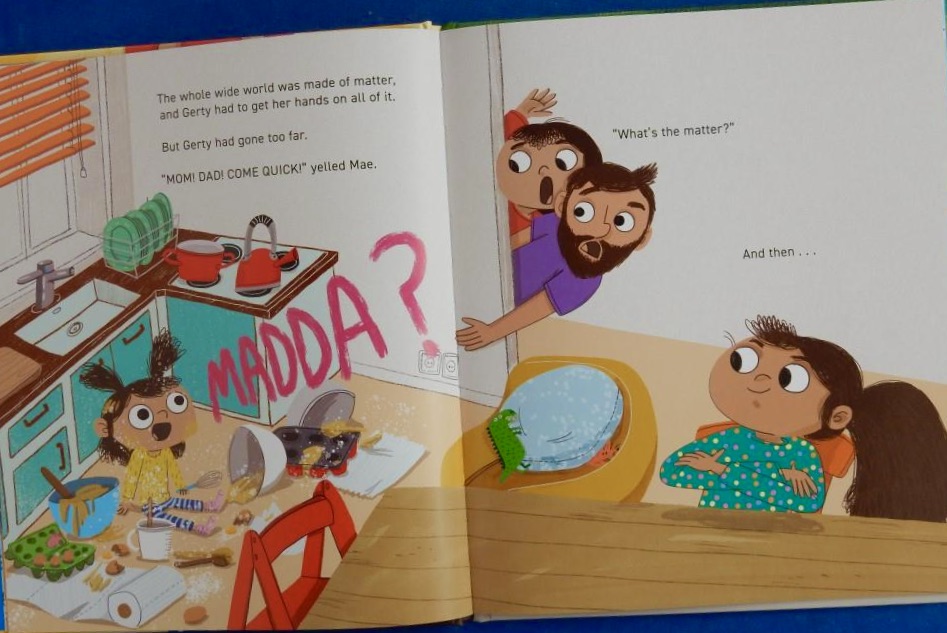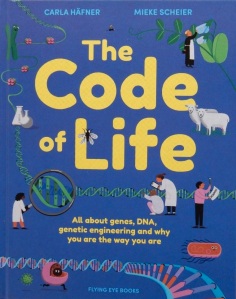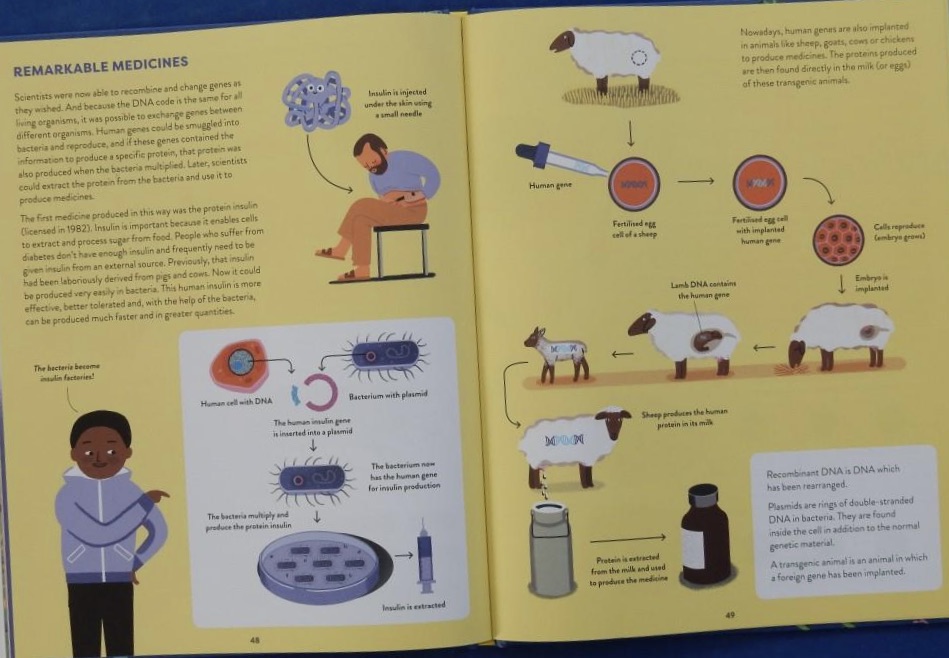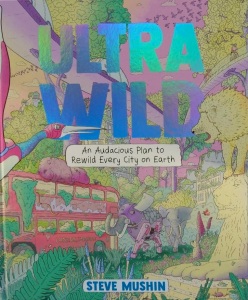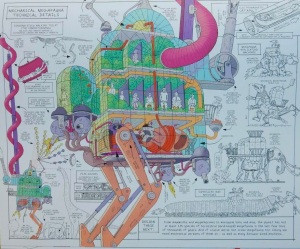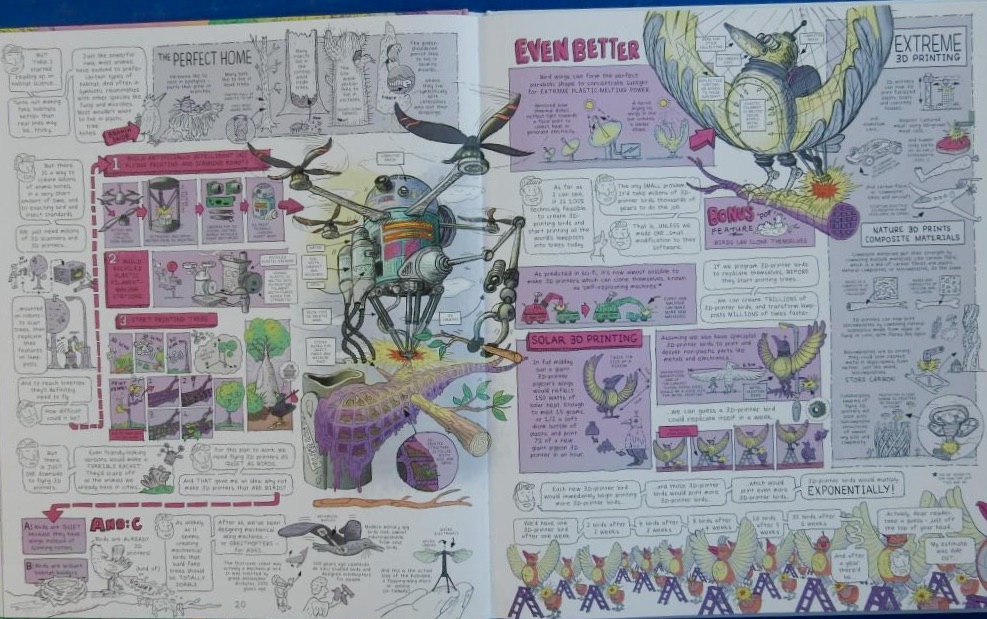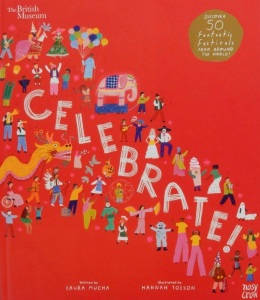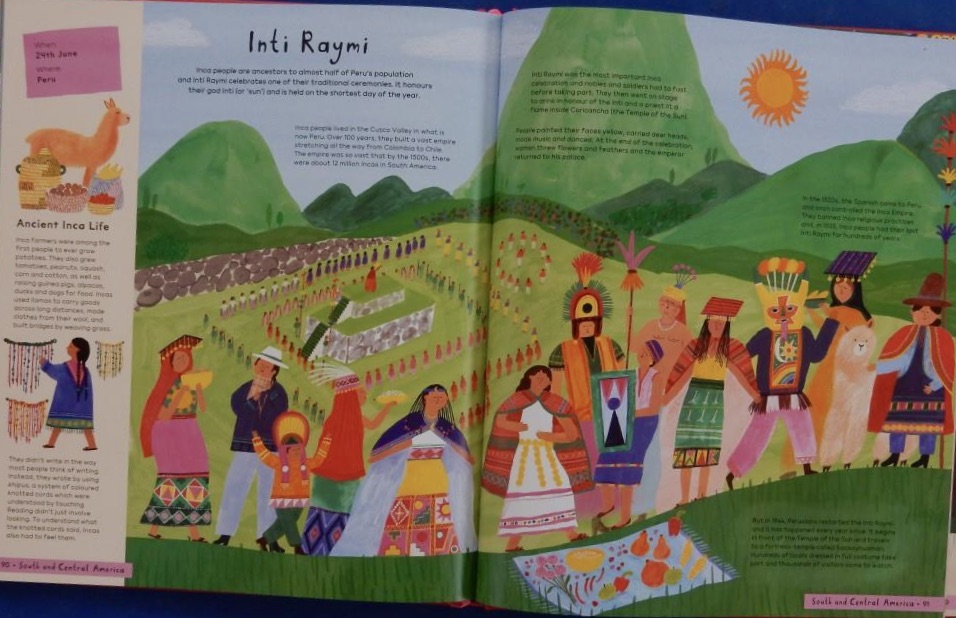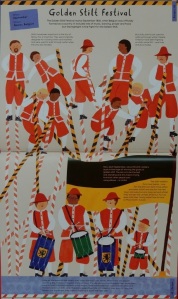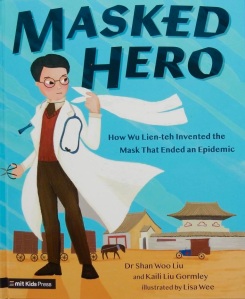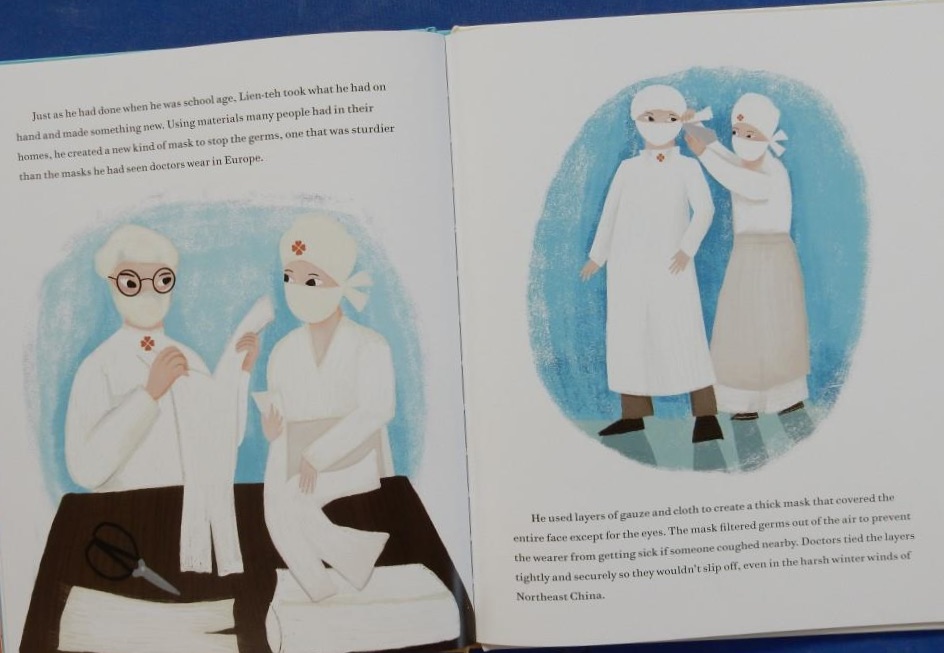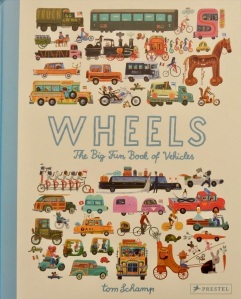
Explodapedia: Rewild
Ben Martynoga, ill. Moose Allain
David Fickling Books
The latest topic biologist and neuroscientist Ben Martynoga turns his attention to in this cracking non-fiction series is that of rewilding. In the glossary, the author defines rewilding thus: ‘giving ecosystems the help and space they need to grow more biodiverse, resilient and able to look after themselves, and us too.’ There’s no doubt our planet is in a diversity crisis but, taking a positive stance, in his witty style, the author accentuates hope for the possibilities that rewilding offers.
Presenting such topics as the rules and intricacies of ecosystems and food chains, how the release of predatory wolves in Yellowstone National Park in Montana created opportunities for wildlife to thrive at every level so that with denser tree cover, healthier rivers and wetter habitats, the entire park has become more resilient if the climate crisis continues to escalate; as well as the way trees share and work together.

There’s even a plan by two biologists, Eriona Hysolli and George Church to use preserved mammoth DNA to create what they term, ‘mammophants’ to help tackle the biodiversity crisis.
With a plethora of illustrations that have amusing speech bubbles, and an author whose love for his subject is electrifying, every spread is filled with accessible scientific information. This is an urgent rallying cry for individuals and environmental decision makers the world over. A powerful read indeed.
















































